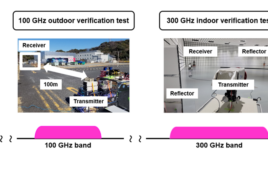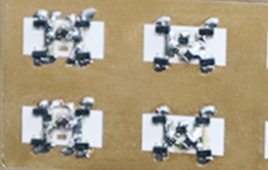Environmental scientists can tell a lot about the health of rivers, bays, wetlands and other waterways by studying the flow of sediments suspended in the water, and from the mud that forms when these sediments settle to the bottom.
“Mud is not glamorous, but mud is where all the contaminants collect and stick,” notes Oliver Fringer, professor of civil and environmental engineering at Stanford.
Suspended sediments can trap toxic pollutants and prevent the formation of fish-killing red-tides, he explained. And measuring and predicting how sediment flows will form mud will help reveal how waterways will respond to rising sea levels and climate change. But until now, studying sediment flows—also known as measuring turbidity—has been slow, imprecise and labor-intensive, hampering efforts to better understand the health of waterways.
Fringer hopes to overcome the shortcomings of current study methods by developing a specially instrumented aerial drone to measure sediment flows in San Francisco Bay. Measuring 4 feet in diameter, the drone flies over 100 feet above the water. Its camera is calibrated to pick up very specific wavelengths of light. Certain reds down near the infrared band of the spectrum correspond to sediment. Other colors correspond to the chlorophyll and to the organic nutrients that feed algae. The drone can revisit a location as many times as necessary, snapping high-resolution photos at the pace of one per second, painting a detailed picture of turbidity.
Credit: Stanford University
The drone would represent a big advance from one decidedly low-tech way of measuring sediment flow that is common today: Researchers lower a Secchi disk of alternating black-and-white quadrants into the water to observe at what depth it becomes too murky for the disk to be seen. This can provide good information about a particular spot, but says very little about the dynamics of a broader area. Some scientists try to cover more area by dragging sophisticated sensors from boats that move back and forth across the water. But boats can’t operate in shallow areas and are costly to operate, making it difficult to measure turbidity changes over time. Satellites are also being used to cover large areas, but they collect relatively low-resolution data and only pass a spot once every few days. In short, all three methods make it difficult to capture enough high-resolution data, over long enough periods, to provide an accurate way to assess how shifting winds, water currents and other forces affect the turbidity of bay waters. The drone, Fringer says, offers a cost-effective, high-resolution alternative.
The new system was designed by Joe Adelson, a Ph.D. candidate in civil and environmental engineering, with Fringer overseeing the project under the auspices of Stanford’s Bob and Norma Street Environmental Fluid Mechanics Laboratory. Fringer says using the drone to measure the turbidity of San Francisco Bay is an important step toward equipping the field with a tool that can collect granular information about other bays, wetlands and waterways. “Any large river flowing through populated areas, like the Mekong in Vietnam or the Mississippi, has problems with muddy sediments and red tides at its mouth,” Fringer says.
Giving environmental scientists a way to collect more data on turbidity will put them on a path toward developing computer models to help them forecast sediment flows in different parts of a waterway, a process almost as complex as making localized weather predictions. “If you look at the development of large-scale weather-prediction, people have been using ever larger amounts of data from satellites to improve the models,” Fringer said. “Nobody’s been doing that for sediments, and the reason is that we haven’t had that kind of data yet.”




